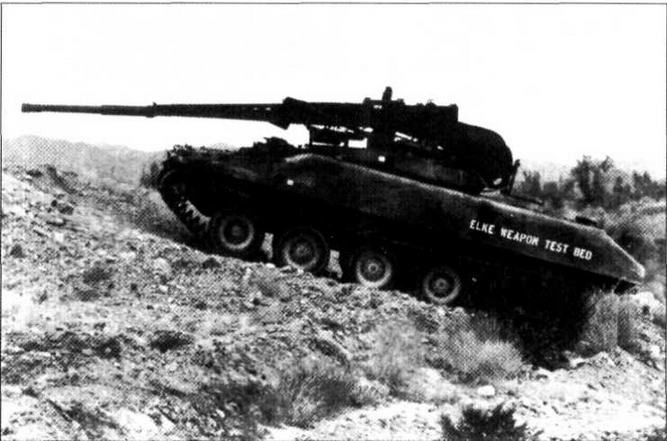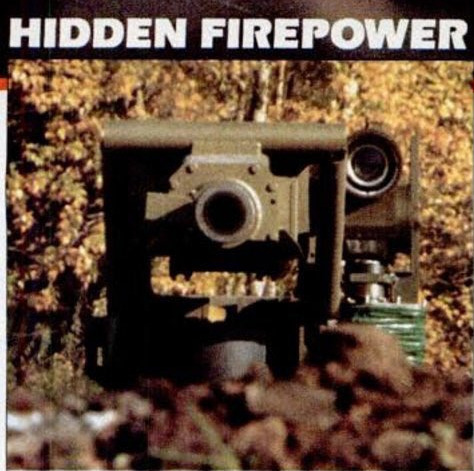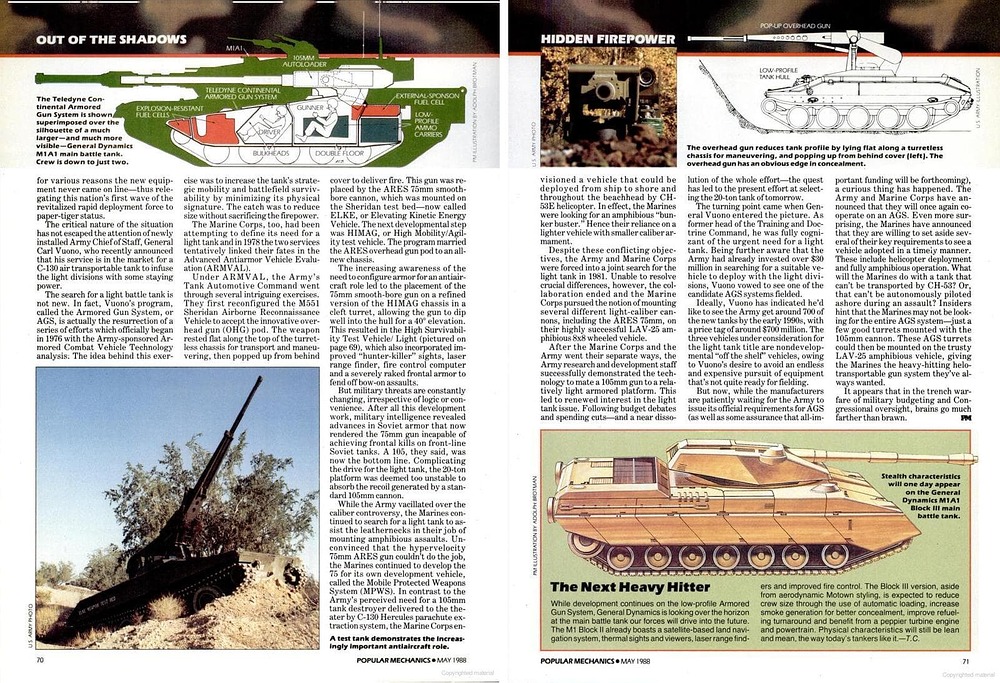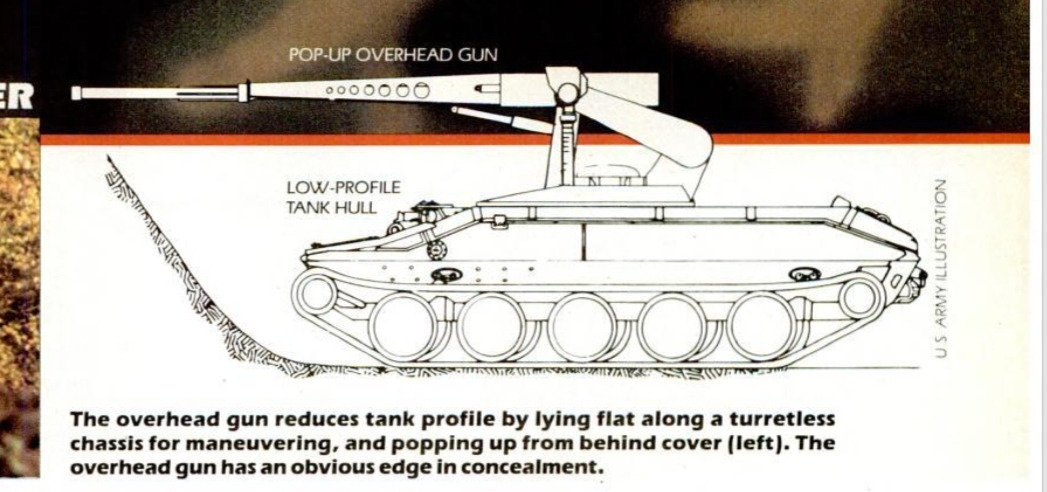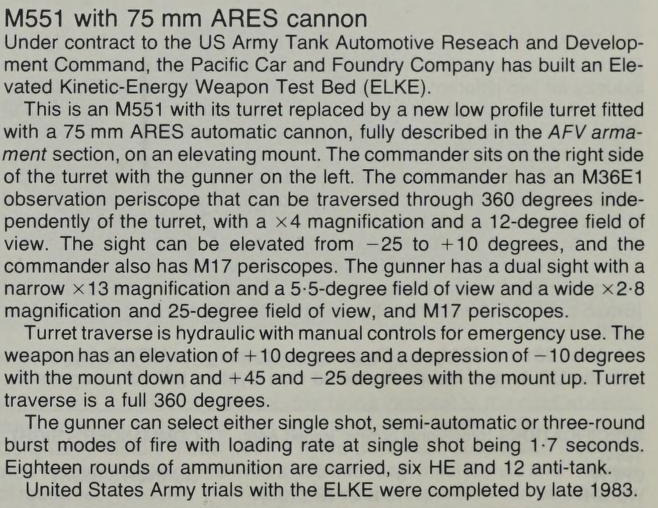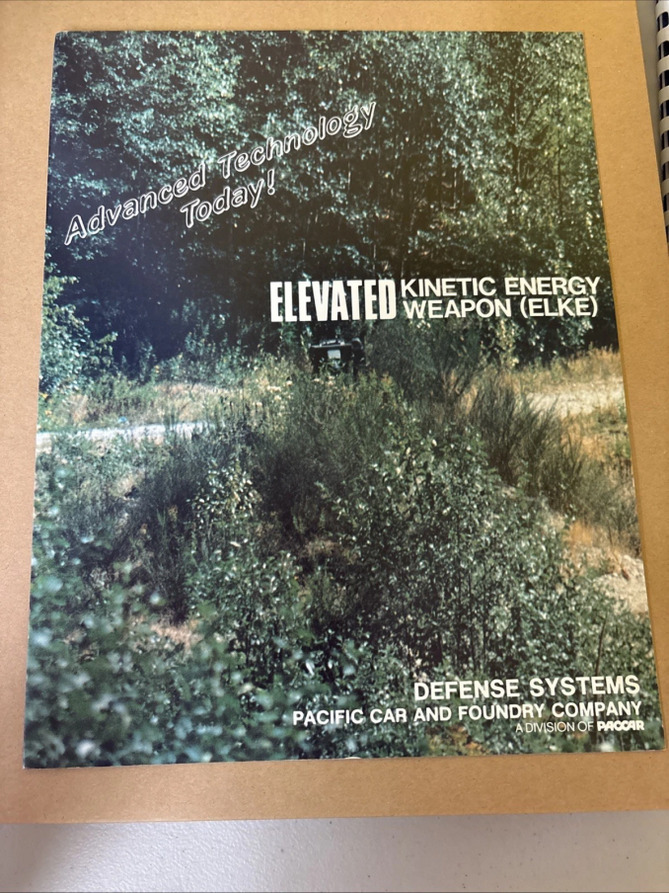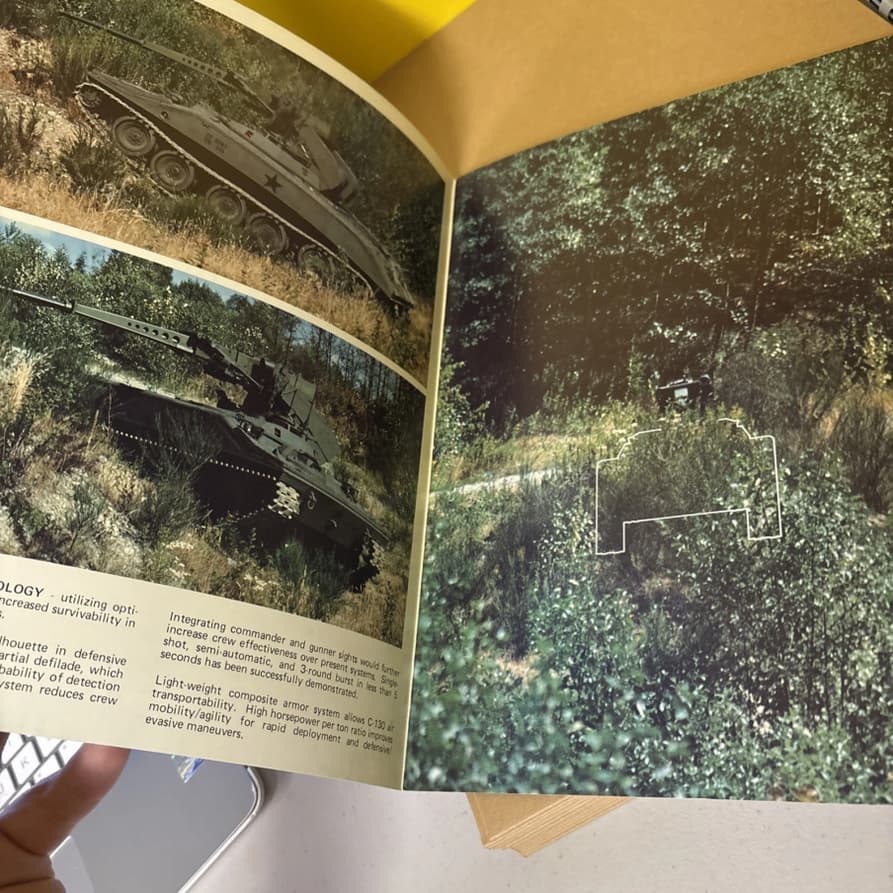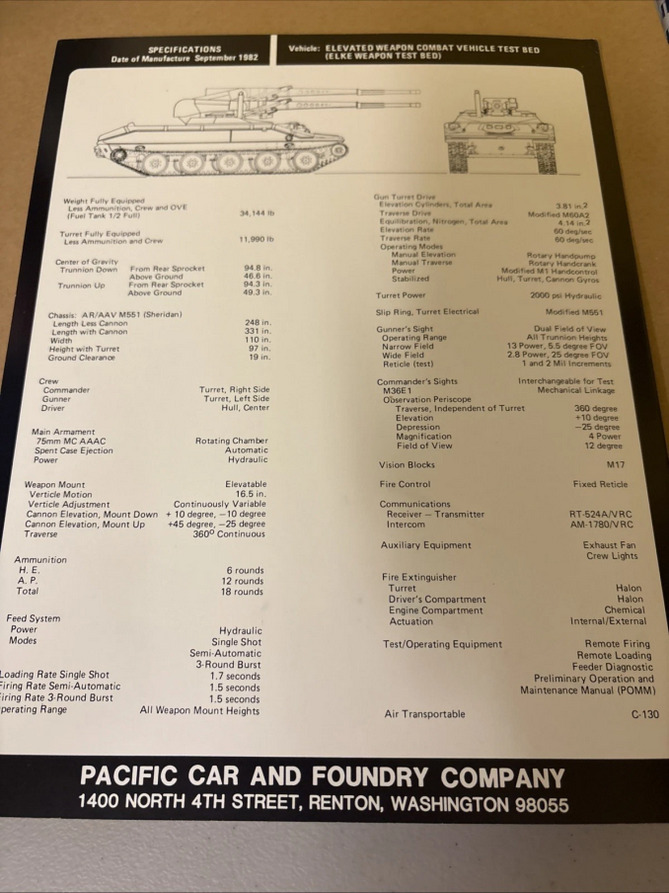- Yes
- No
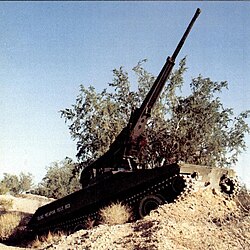
The ELKE (Elevated Kinetic Energy) program was one of the most innovative and unconventional projects in American armored vehicle development during the late Cold War. Born out of a period marked by rapid technological evolution and doctrinal transformation, ELKE sought to combine high mobility, a revolutionary overhead gun design, and reduced crew exposure. Although ultimately unsuccessful, the project reflects a fascinating intersection of engineering ambition and strategic necessity.
The ELKE (Elevated Kinetic Energy) is a United States experimental light tank prototype developed during the early 1980s. Built on the chassis of the M551 Sheridan light tank, ELKE was equipped with a turretless, hydraulically elevated weapon station mounting a 75mm XM274 ARES autoloading smoothbore cannon.
The innovative design aimed to combine low vehicle profile and high gun elevation/depression capabilities, allowing the tank to engage targets over obstacles while keeping the crew protected inside the hull. The hydraulic gun mount permitted an elevation range of -40° depression and +25° elevation, significantly exceeding conventional turreted tanks.
Despite promising concepts, the ELKE never advanced beyond prototype stages due to complex and unreliable hydraulic systems and limited ammunition capacity, constraining operational effectiveness.
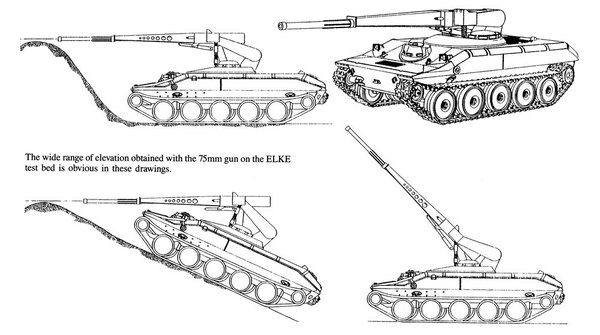
By the late 1970s and early 1980s, the U.S. Army recognized the operational limitations of the aging M551 Sheridan, its primary air-deployable light tank. Despite being innovative for its time—equipped with a 152mm gun/launcher—the Sheridan suffered from reliability issues, insufficient armor, and inadequate firepower against emerging Soviet main battle tanks. Meanwhile, the new “AirLand Battle” doctrine emphasized rapid deployment and maneuver warfare, driving the need for a lightweight armored vehicle that could be transported by C-130 aircraft yet deliver substantial combat capability.
In response, several experimental programs were launched to explore next-generation concepts for light armor, including:
-
ARMVAL (Advanced Antiarmor Vehicle Evaluation): A joint Army–Marine Corps effort to define future light armor concepts.
-
HIMAG (High Mobility/Agility test vehicle): Focused on superior agility and power-to-weight ratios.
-
HSTV-L (High Survivability Test Vehicle-Light): An early attempt to design a low-profile, highly survivable tank with advanced optics and unmanned turret.
Emerging from these efforts, the ELKE (Elevated Kinetic Energy) program was perhaps the boldest and most unconventional design. Developed by Pacific Car and Foundry (PACCAR) around 1982, ELKE replaced the traditional turret entirely with a hydraulically elevated weapon station mounted overhead. This design featured the XM274 ARES 75mm autoloading smoothbore gun, capable of a high rate of fire with advanced kinetic energy rounds, while allowing the vehicle to remain behind cover and still engage targets thanks to its extreme elevation and depression angles.
However, ELKE faced major challenges: the complex hydraulic elevation system was prone to failures, and the onboard ammunition capacity—limited to just 6–12 rounds—was inadequate for sustained combat. Additionally, evolving battlefield demands increasingly favored larger caliber guns (105mm and above) for better lethality. As a result, the ELKE never advanced beyond prototype stage.
Despite its cancellation, ELKE’s innovative overhead gun concept and low-profile design left a legacy, influencing later projects such as the M8 Armored Gun System and complementing technologies explored in the HSTV-L.
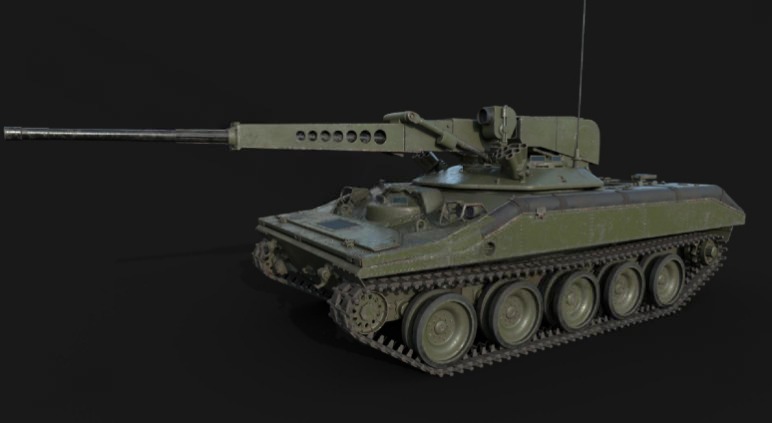
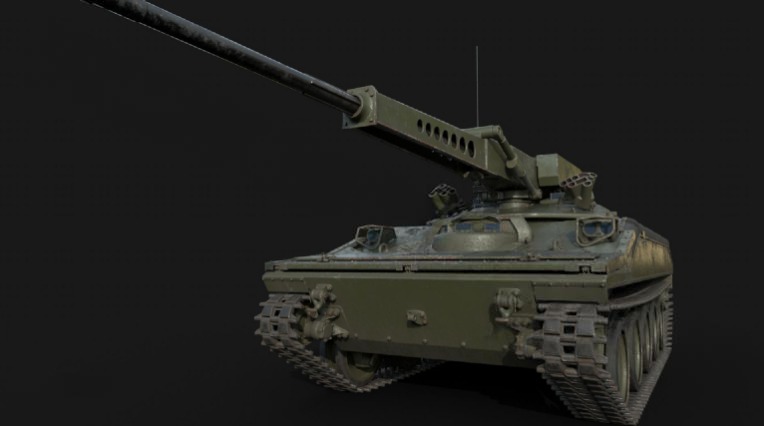
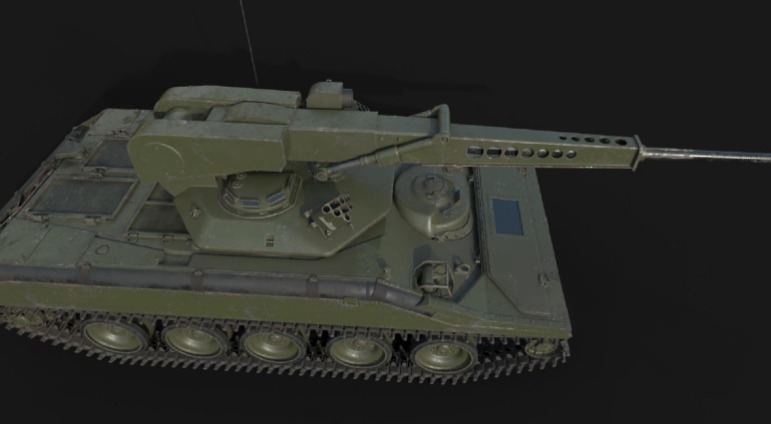
The ELKE concept aimed to radically lower the vehicle’s silhouette, making it harder to detect and target. Instead of a rotating turret, the vehicle mounted its primary armament on a hydraulic overhead arm, allowing the gun to remain hidden behind cover and then “pop up” to engage targets.
The design prioritized:
-
Maximum depression and elevation angles: The hydraulic arm enabled the 75mm ARES cannon to depress up to -40 degrees and elevate to +25 degrees, allowing ELKE to exploit terrain creatively for hull-down positions.
-
Crew survivability: All three crew members were placed within the hull, reducing exposure to enemy fire.
-
Light weight and air transportability: Retaining the M551 Sheridan’s weight (~15–16 tons) ensured compatibility with C-130 airlift operations.
-
Rapid fire capability: The XM274 ARES 75mm smoothbore cannon was an experimental autoloading gun, potentially capable of delivering up to 60 rounds per minute in sustained fire or even faster in short bursts.
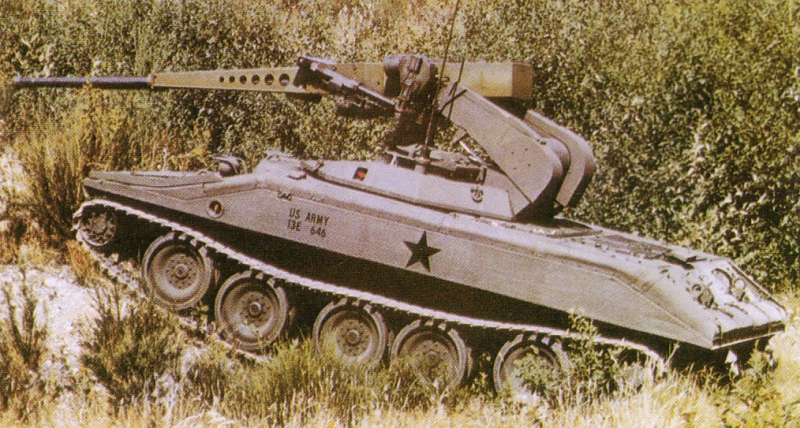
- Manufacturer: Pacific Car and Foundry
- Chassis: M551 Sheridan light tank chassis (modified)
- Crew: 3 (Commander, Gunner, Driver)
- Weight: Approximately 15 tons
- Dimensions:
- Length: ~6.3 meters (consistent with Sheridan chassis length)
- Width: Approximately 2.79 meters (similar to Sheridan)
- Height: Approximately 2.4 meters (low-profile due to turretless design)
- Engine: Continental AVDS-1790-2 V8 diesel engine producing ~300 horsepower
- Top Speed: Around 64 km/h (40 mph)
- Armament:
- 75mm XM274 autoloading smoothbore cannon mounted on a hydraulic arm capable of extreme elevation and depression angles (-40° to +25°)
- Secondary armament typically included a 7.62mm coaxial machine gun and potentially additional machine guns
- Ammunition Capacity: Limited by the magazine-fed system; exact rounds carried varied but insufficient for prolonged engagements
- Armor: Lightweight aluminum hull with optional applique armor such as ceramic and Kevlar layers, optimized for mobility rather than heavy protection
- Suspension: Improved from Sheridan, with upgraded powertrain and chassis modifications to handle new weight distribution
- Unique Features:
- Turretless elevated gun design reducing silhouette and weight
- Fully crew-protected hull allowing for hull-down fighting tactics
- High rate of fire from an autoloading medium-caliber cannon
- Exceptional gun depression enabling effective use of terrain for ambush and hull-down defense
The XM274 ARES gun was a significant technical achievement in its own right. It offered high muzzle velocity, long-rod penetrators, and the potential to penetrate early Soviet T-80 frontal armor according to test data.
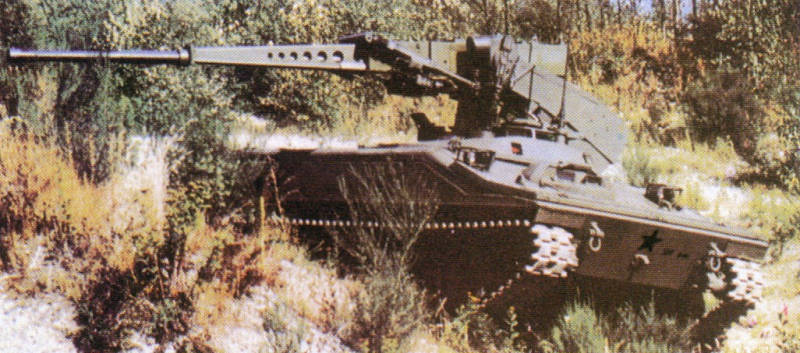
ELKE was not created in isolation. It was part of a lineage of experimental vehicles
-
HIMAG (High Mobility/Agility): Focused on mobility and agility.
-
HSTV-L (High Survivability Test Vehicle-Light): Introduced the idea of unmanned turrets and improved fire control.
-
ELKE (Elevated Kinetic Energy): Pushed the concept further by eliminating the turret entirely.
In the broader context, these programs were responses to
-
Soviet advances in armor technology.
-
The need to replace the aging M551 Sheridan.
-
The “Rapid Deployment Force” concept that sought highly mobile, air-transportable firepower for early intervention forces.
Despite its innovation, ELKE faced several insurmountable obstacles
-
Mechanical complexity: The hydraulic arm added significant mechanical failure risks.
-
Limited ammunition capacity: The internal arrangement limited the number of carried rounds below military requirements.
-
Shifting strategic assessments: New Soviet tanks, including advanced T-80 variants, drove requirements for larger caliber guns (105mm+).
-
Army preference: By the mid-1980s, the Army favored the Armored Gun System (AGS) with a conventional turret, leading to the selection of FMC’s CCVL (later M8 Buford).
In 1985, ELKE’s development was effectively ended. The AGS program continued until 1996 before being canceled, with further successors like the M1128 Mobile Gun System and ultimately the modern M10 Booker.
While ELKE never saw combat, its design anticipated several modern trends
- Unmanned turrets and remote weapon stations: Moving the gun outside the crew compartment.
- Hull-down engagement focus: Maximizing gun depression to use terrain creatively.
- Rapid-fire autocannon: Bridging the gap between low-caliber autocannons and larger tank guns.
- Crew survivability: Prioritizing low profile and protected crew compartments.
In many ways, ELKE can be seen as an ancestor to contemporary light tanks and reconnaissance vehicles that balance mobility with firepower and protection.
ELKE remains a remarkable illustration of Cold War military engineering creativity
- Its concept directly influenced later U.S. projects exploring unmanned turrets.
- The overhead gun system showed how radically designers could rethink tank architecture to prioritize survivability.
- Even in failure, ELKE contributed to the broader understanding of the limits of unconventional designs.
Today, it survives in a handful of photos, engineering drawings, and mentions in military histories—including works by R.P. Hunnicutt, who documented M551 Sheridan variants and experimental designs in detail.
References (multiple independent, reputable sources)
- Honeycutt, R.P., Sheridan: A History of the American Light Tank (Volume 2), Presidio Press.
- Armored Warfare, “Development of ELKE”:
In Development: ELKE | Armored Warfare - Official Website - Popular Mechanics (May 1988):
PM Meets the Stealth Tanks | U.S. Tank History - Wikipedia, “M551 Sheridan”:
M551 Sheridan - Wikipedia




